The Barnsley Wall
The Barnsley Wall
Intro text

Anglo-Saxon period cross in churchyard of All Saints, Cawthorne
The parish church of All Saints’ is first mentioned in the Domesday Survey for the village which says ‘here there is a priest and a church’. Nothing exists to show the exact site of what would almost certainly have been a wooden church built in Saxon times. The present building developed gradually from the 11th Century onwards, acquiring its tower and bells around 1457. Most of the present interior dates from a refurbishment planned and paid for by Walter Spencer-Stanhope and the Pre-Raphaelite artist younger brother, Roddam. Their architect was G F Bodley and his influence (and that of Roddam Spencer-Stanhope) can still be seen. Outside, however, the reconstructed 10th Century Anglican cross which was dug up in pieces in the Church during the refurbishment of the 1870’s testifies to the site’s long history as a place of Christian worship.
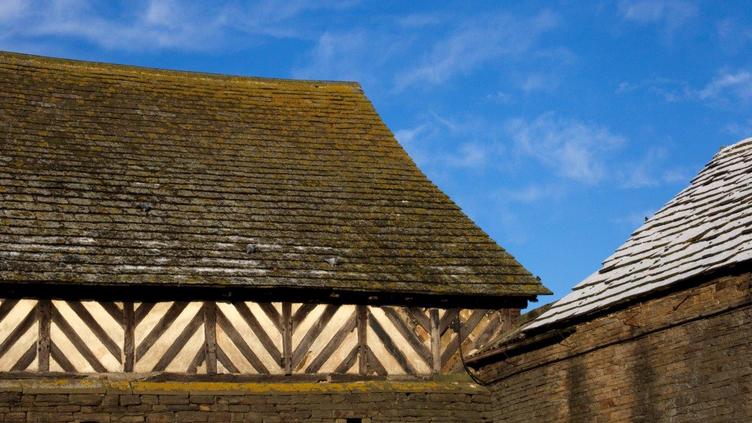
Gunthwaite Hall
Gunthwaite Hall
The barn at Gunthwaite Hall was built in the middle of the sixteenth century, for Godfrey Bosvile (1520-
It is a northern aisled barn with a low pitched roof, stone walls up to three-
The barn is eleven bays long and now divided in two. Otherwise it is more or less unaltered except for repairs. It is still in agricultural use, being used for animal shelter and crop storage.
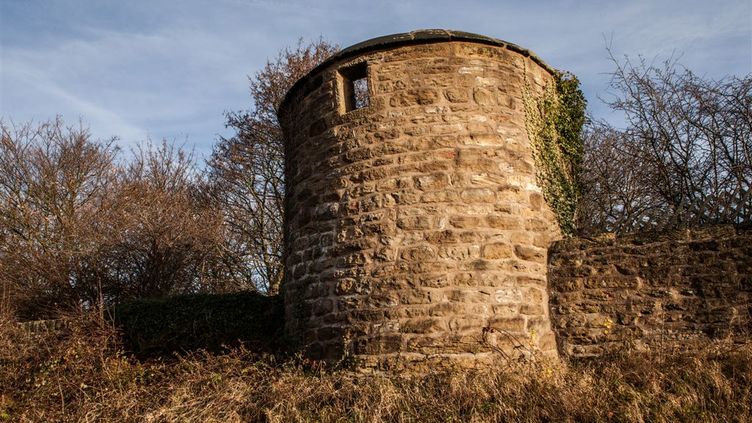
Houndhill
A substantial Grade II listed Tudor Farmhouse (part timber-framed) in Worsbrough, near Barnsley.
The present house, which dates from the late 16th century with 17th-century additions, was originally built by Robert Elmhirst. His son Richard Elmhirst, who sided with the Royalists, constructed the fortifications in 1642 at the beginning of the English Civil War. It was extensively renovated in 1934.
The house is built in ashlar, with a stone slate roof in two storeys to an H-shaped plan. The older wing is timber framed. The first specific reference to land at Houndhill appears in a lawsuit of 1556, but it is not known when the land was acquired or when the first house was built there. However, the first known reference to the family of Elmhirst living in the district appears in the Rockley Manor Court Rolls of 1340 (The Manor of Rockley adjoined the Manor of Worsbrough) when Roger Elmhirst was fined four pence for allowing his two horses to stray into the meadow of the Lord of the Manor. When Richard Elmhirst was involved in a lawsuit following his father's death in 1618 he deposed that: "Houndhill and Elmhirst are both copyhold and had been demised to his ancestors for twelve descents last past."
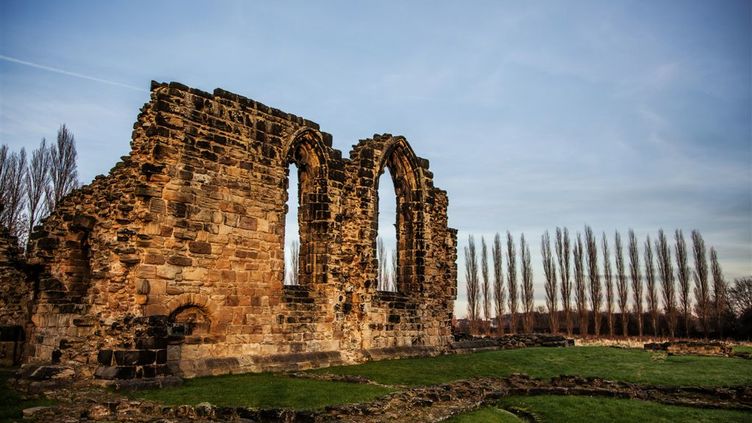
The Priory at Monk Bretton
On the edge of Barnsley stand the substantial remains of Monk Bretton Priory, a Cluniac monastery founded in the 12th century. Today visitors can see the unusually well-marked ground plan, the almost complete west range and the 15th century gatehouse.
Founded in about 1154 by a local landowner, Adam Fitzswaine, it was a daughter house of the rich Cluniac priory at Pontefract. But within 50 years bitter quarrels – at times even involving gang warfare – had broken out between the two houses, as Pontefract sought to retain direct control of Monk Bretton. The dispute was only resolved in 1281, when Monk Bretton seceded from the Cluniac Order and became a Benedictine house. Read the full article on the English Heritage website.
Follow the Friends of Monk Bretton Priory on social media for updates on opening times and upcoming events.
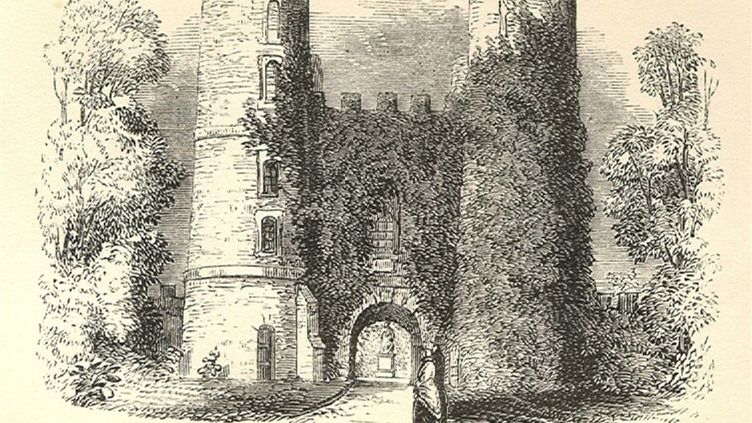
Stainborough Castle
Wentworth Castle is a grade-I listed country house, the former seat of the Earls of Strafford, at Stainborough, near Barnsley in South Yorkshire, England. It is now home to the Northern College for Residential and Community Education.
An older house existed on the estate, then called Stainborough, when it was purchased by Thomas Wentworth, Baron Raby (later Earl of Strafford), in 1708. It was still called Stainborough in Jan Kip's engraved bird's-eye view of parterres and avenues, 1714, and in the first edition of Vitruvius Britannicus, 1715. The name was changed in 1731. The original name survives in the form of Stainborough Castle, a sham ruin constructed as a garden folly on the estate.
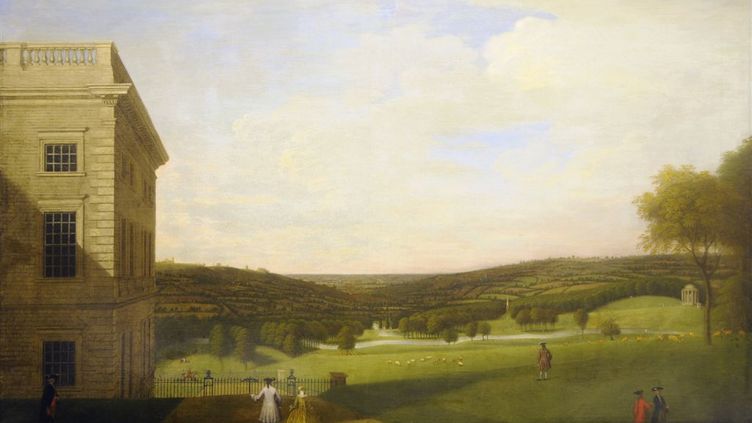
'View of Wentworth Castle' attributed to Thomas Bardwell
Thomas Bardwell was born in Suffolk and he became a painter specialising in portraits and conversation pieces. In the Ipswich Journal of June 1739 he advertised that he would be taking premises and painting portraits for between 3 and 4 months before travelling on to London. In the 1740s and 1750s he was mostly based in London but he also travelled to Yorkshire, Scotland and Wales painting portraits.
The original painting is on display at Cannon Hall Museum - You can search more Barnsley Museums collections online
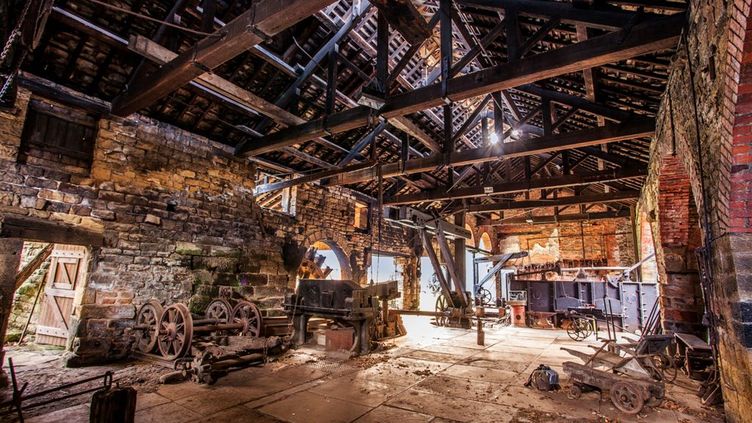
Wortley Top Forge
A Water Powered Heavy Iron Forge whose history can be traced back to at least 1640. The site has been used for bloomeries and fineries but it is best known for the Wrought Iron Railway Axles that were hammer-welded between 1840 and the closing of the Forge around 1910.
Following the final abandonment of the site in 1929, various bodies have been involved in securing the site which now forms the heart of an Industrial Museum.
Exhibits at Top Forge include the original water wheels and water-powered drop hammers within the original Forge building which is progressively being restored to 1900s condition. All three Water Wheels can be run subject to the conditions.
An adjoining 1750s building houses a 1900s Machine Shop, that is used for most of the restoration work, displays of medium sized and small stationary steam engines and displays of old machine and hand tools.
Vist their website for more information and details about events
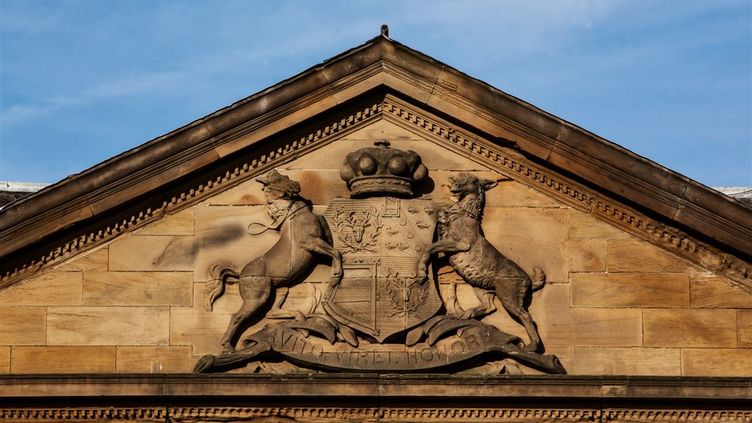
Wortley Crest
The surname of WORTLEY has the associated arms recorded in Sir Bernard Burkes General Armory. Ulster King of Arms in 1884. (Wortley, County Yorkshire, bart., extinct 1665; descended from Sir Thomas Wortley, of Wortley, representative of an ancient County Yorkshire family, Knight of the Body to Edward IV., Richard III., Henry VII., and Henry VIII. Sir Francis Wortley, of Wortley, a gallant cavalier, was created a bart. in 1611, but the title expired with his son, Sir Francis Wortley, second bart). The origin of badges and emblems, are traced to the earliest times, although, Heraldry, in fact, cannot be traced later than the 12th century, or at furthest the 11th century. At first armorial bearings were probably like surnames and assumed by each warrior at his free will and pleasure, his object being to distinguish himself from others. It has long been a matter of doubt when bearing Coats of Arms first became hereditary. It is known that in the reign of Henry V (1413-1422), a proclamation was issued, prohibiting the use of heraldic ensigns to all who could not show an original and valid right, except those 'who had borne arms at Agincourt'. The College of Arms (founded in 1483) is the Royal corporation of heralds who record proved pedigrees and grant armorial bearings.
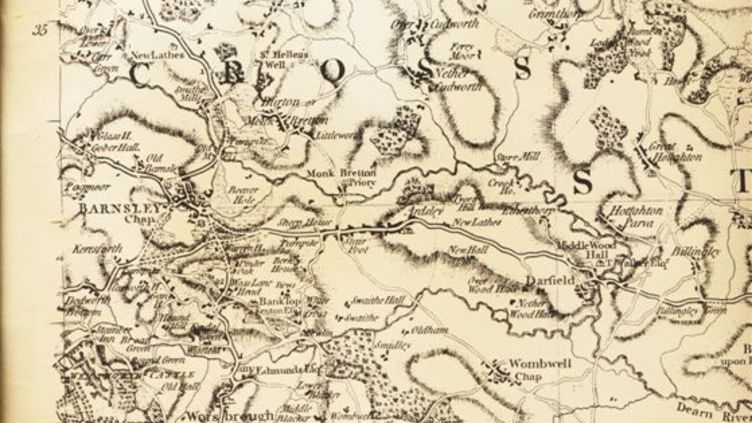
Jeffrey's Map, 1775
Thomas Jefferys (c.1719–1771) was a cartographer and engraver who produced a series of English country large-scale maps in the 1760s and 1770s. You can see this series of maps and 100s more by visiting the Archives Discovery Centre (open weekdays, no appointment needed)
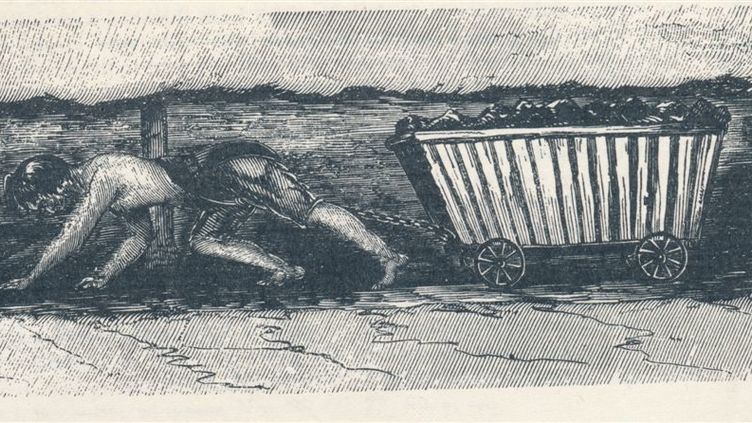
Hurriers
In August 1842 the Children's Employment Commission drew up an act of Parliament which gave a minimum working age for boys in mines, though the age varied between districts and even between mines. The Mines and Collieries Act 1842 also outlawed the employment of women and girls in mines. In 1870 it became compulsory for all children aged between five and thirteen to go to school, ending much of the hurrying. It was still a common profession for school leavers well into the 1920s.
The 1969 song The Testimony of Patience Kershaw by Frank Higgins (recorded by Roy Bailey and The Unthanks) is based on the testimony of Patience Kershaw (aged 17) when she spoke to the Children's Employment Commission. Her testimony includes: "The bald place upon my head is made by thrusting the corves ... I hurry the corves a mile and more underground and back; they weigh 3 cwt ... The getters that I work for are naked except for their caps ... Sometimes they beat me if I am not quick enough" It was published in My Song Is My Own (compiled by Kathy Henderson, Pluto Press, 1979).
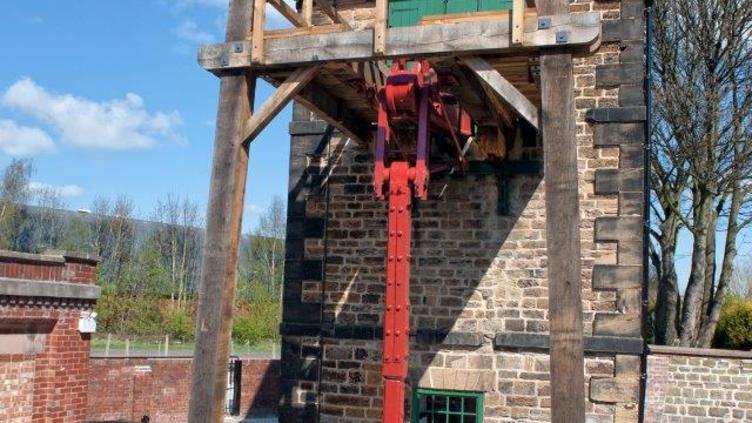
Newcomen Engine, Elsecar
The Elsecar Newcomen Engine is the oldest steam engine in the world to survive in its original location. It was built in 1794-5, for the Earl Fitzwilliam of nearby Wentworth Woodhouse, to pump water from Elsecar’s first deep coal mine. It was known as the Earl’s Great Engine and sat at the heart of the Earl’s new model industrial village at Elsecar. It became a scheduled ancient monument in 1974 and is now recognised as one of the country’s most important historical sites. It was conserved in 2014 by Barnsley Museums, with a grant from the National Lottery Heritage Fund and support from Historic England.
Read more about the engine and Elsecar on the Barnsley Museums Blogsite.
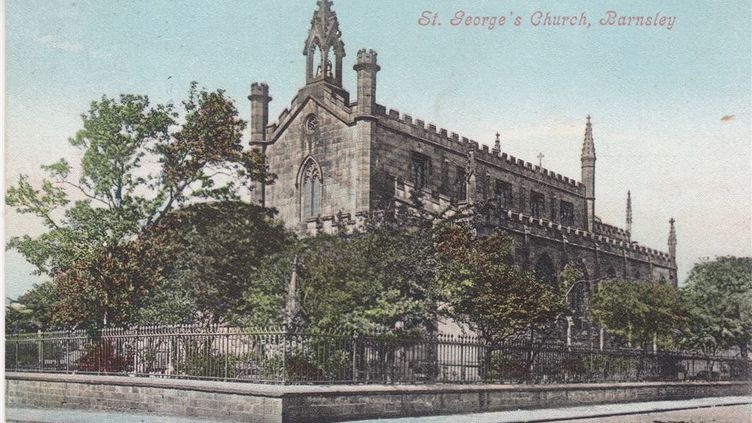
St George's Church
The Church on George Street has been open for over 200 years. Visit their website for the latest information and events
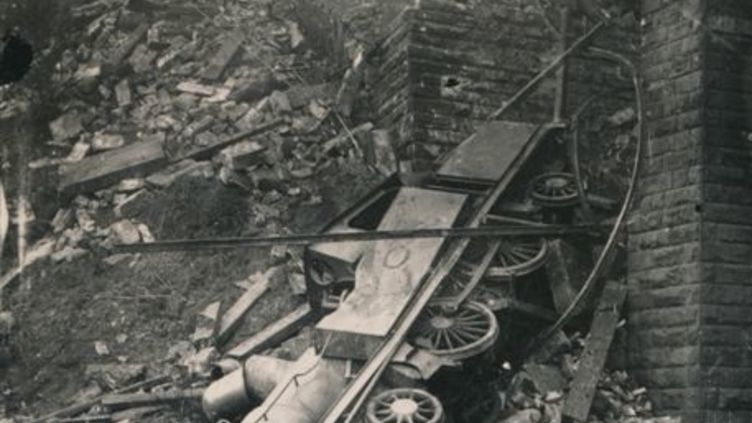
Penistone Viaduct Crash, 1917
The Lancashire and Yorkshire Railway Company’s line from the Great Central's main line station at Penistone to Bradford, via Huddersfield, is carried over one of the longest viaducts in the country. About 50 yards from Penistone Station the viaduct commences its 300 yards span of the Don Valley, with the river 80ft. below. It was built of a long series of arches, carried on stone pillars varying from 60ft. to 80ft. high. The width of the viaduct is about 30ft., with a double track of rails laid upon it. It was erected sixty-seven years ago, and, as our illustration shows, one of the arches carries the railway over a road — the main road from Sheffield to Halifax. A fortnight ago a slight crack was observed in the parapet wall, but an examination of the foundations of the pillar affected failed to reveal any ground for anxiety, and whilst repairs were put in hand the ordinary traffic was continued with caution. At 4.07 p.m. on the 3rd inst. a train from Huddersfield crossed the viaduct into Penistone. Eight minutes later, whilst shunting operations were in progress on the viaduct at the station end, the track was observed to be bending, and a hollow was formed. A warning shout enabled the two men on the engine to jump and run back into safety. Then followed a crash. The viaduct was collapsing. Two arches and about 30 yards of rail plunged into the valley. Momentarily the engine poised on the edge of the chasm, then fell into the ruin, burying itself in the débris almost to the bunker. When the disaster occurred the engine was in the act of backing a number of wagons into the station, but it wrenched itself from the couplings and the train was left in safety, though one wagon, derailed, remained on the bridge spanning the roadway for some hours.
Learn more about events in Barnsley when you visit the Archives Discovery Centre
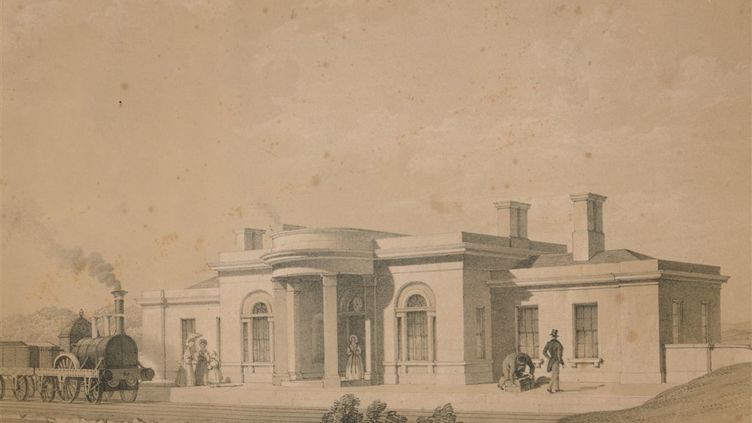
Barnsley's first train station - Cudworth, 1840
The station was built by the North Midland Railway Company in 1840 and was actually called "Barnsley Station at Cudworth Bridge". Then, in 1885, the station was extended by the Hull & Barnsley Railway Company, but strangely enough, it was not connected to the Midland Railway system until later the next century.
Passengers we collected and dropped off until 1968, and in 1988, the line was totally closed due to mining subsidence.
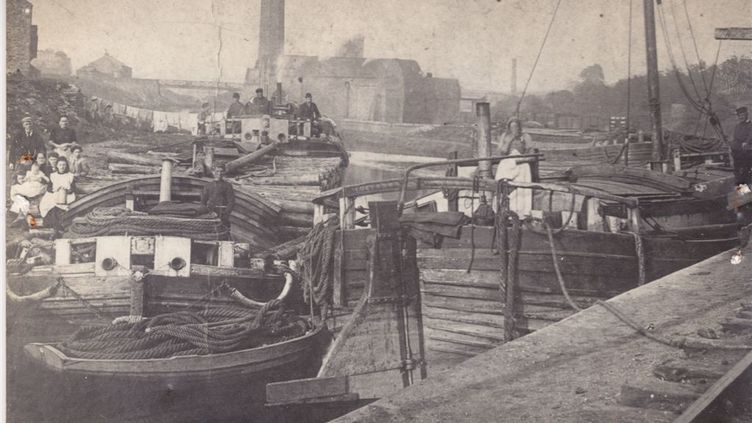
Elsecar Canal, 19th Century
Prior to the arrival of the railway in the mid nineteenth century, the colliery and ironworks at Elsecar were served by a canal. The Dearne and Dove Canal ran for almost ten miles through South Yorkshire, from Swinton to Barnsley. The Elsecar branch opened in 1798 and closed in 1928. In 1991 the Barnsley Canal Group (reformed as the Barnsley, Dearne & Dove Canals Trust in 2000) commenced restoring the top of the Elsecar branch of the canal in 1991 conjunction with work at what is now the Elsecar Heritage Centre.
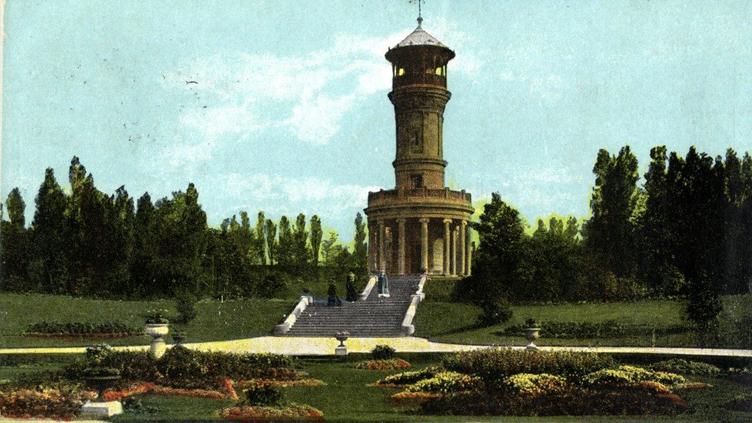
Locke Park
Locke Park is named after the renowned railway engineer Joseph Locke (1805-60), who was brought up in Barnsley. Joseph Locke’s widow, Phoebe, gave High Stile Field to the town on 24 April 1861 for a park in memory of her husband and as part of her husband’s final wishes.
Joseph Locke is ranked alongside Robert Stephenson and Isambard Kingdom Brunel as one of the major pioneers of railway development.
Apprenticed to George Stephenson, Joseph Locke was the driver of ‘The Rocket’ steam locomotive at the opening of the Liverpool and Manchester Railway in September 1830.
He was actively involved in planning and building many railways in England, Scotland and indeed Europe, including Sheffield to Manchester through the Woodhead tunnel only ten miles away from Locke Park.
A listed bronze statue by Baron Carlo Marochetti commemorates Joseph Locke in Locke Park. It was unveiled by Lord Alfred Paget on 18 January 1866.
Read more about the park and keep up to date with the Friends of Locke Park on their website